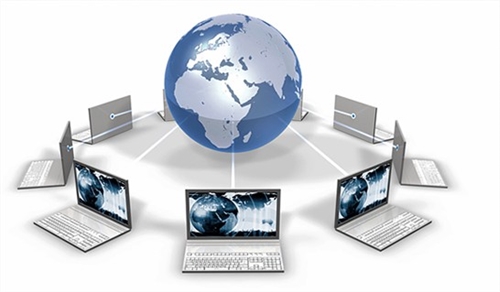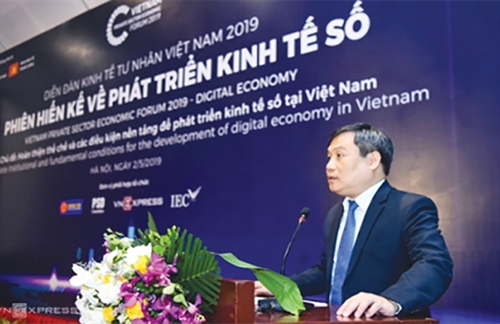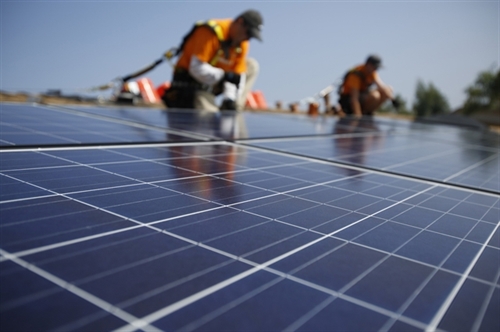Vietnam would apply technologies of the Fourth Industrial Revolution to build an e-Government and strive toward a digital Government in order to perform state administration in a smarter, faster, and more transparent, effective and efficient manner.
Such is one of the orientations set in a draft national strategy on the Fourth Industrial Revolution through 2030 recently released by the Ministry of Planning and Investment (MPI).
 |
| An automobile-assembling factory of Vinfast __Photo: Thong Nhat/VNA |
The draft also targets at reducing operating expenses, shortening the time for study and issuance of policies, improving the effectiveness of the oversight and monitoring of policy enforcement, and improving people’s and businesses’ satisfaction with public services.
Technologies of the Fourth Industrial Revolution would also be applied to upgrade and transform the existing production and business system so as to optimize resource allocation, reduce production and business costs, find new outlet markets at home and abroad, better manage supply chains, and improve the productivity of enterprises in particular and the whole economy in general.
Sectors and fields prioritized for technology upgrading and transformation include public administration, electricity-water, healthcare, education, manufacturing (particularly leather and footwear, textile and garment, food processing, and aquaculture), agriculture, transportation and logistics, commerce, information and communication, and finance-banking.
The MPI also plans to invest in, promote and improve the effectiveness of, science and technology activities, focusing on R&D, so as to master some typical Industry 4.0 technologies and next-generation technologies, striving to take the top position in some modern technologies and ensure national competitiveness in the long run. Technologies prioritized for development include 5G and after-5G mobile connection, artificial intelligence, block chain, 3D printing, cloud computing, Internet of things, cybersecurity, and clean energy.
The draft targets that by 2025, all administrative agencies would provide level-4 online public services and public non-business units would apply IT in communication with people and use online payment or mobile payment. Fiber optic and mobile broadband internets (4G and 5G) would cover all communes; the percentage of Internet users would reach 100 percent by 2030.
To realize such goals, the MPI proposes completing economic institutions and administrative procedures reform; developing infrastructure for connection, building and exploitation of databases; developing human resources; applying technology and changing administration of the public sector.- (VLLF)









